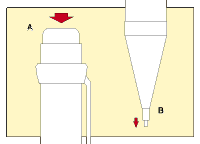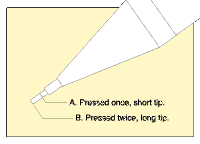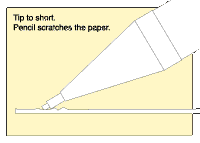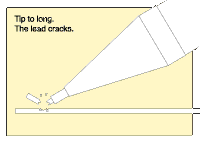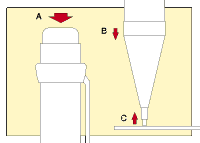We brought the four Xmen
together to perform a small test. They each got a lead pencil
and were told to start writing. Two of the Xmen chose to press
the pencil once before writing commenced, the result of this was poorly
written text on almost totally scratched paper. The other two
pressed the pencil twice wich resulted in lots of broken tips,
ending up in using up all the leads before even writing a whole
page.
Suddenly one of the Xmen forgot to release the thumb before putting
the pencil to the paper, thus making him able to adjust the length
of the lead by pressing the lead in while holding the thumb down.
The group of Xmen asked themselves; Is this the solution to the
lead pencil problem? And as you can see in the illustrated solution
below, it was ...

